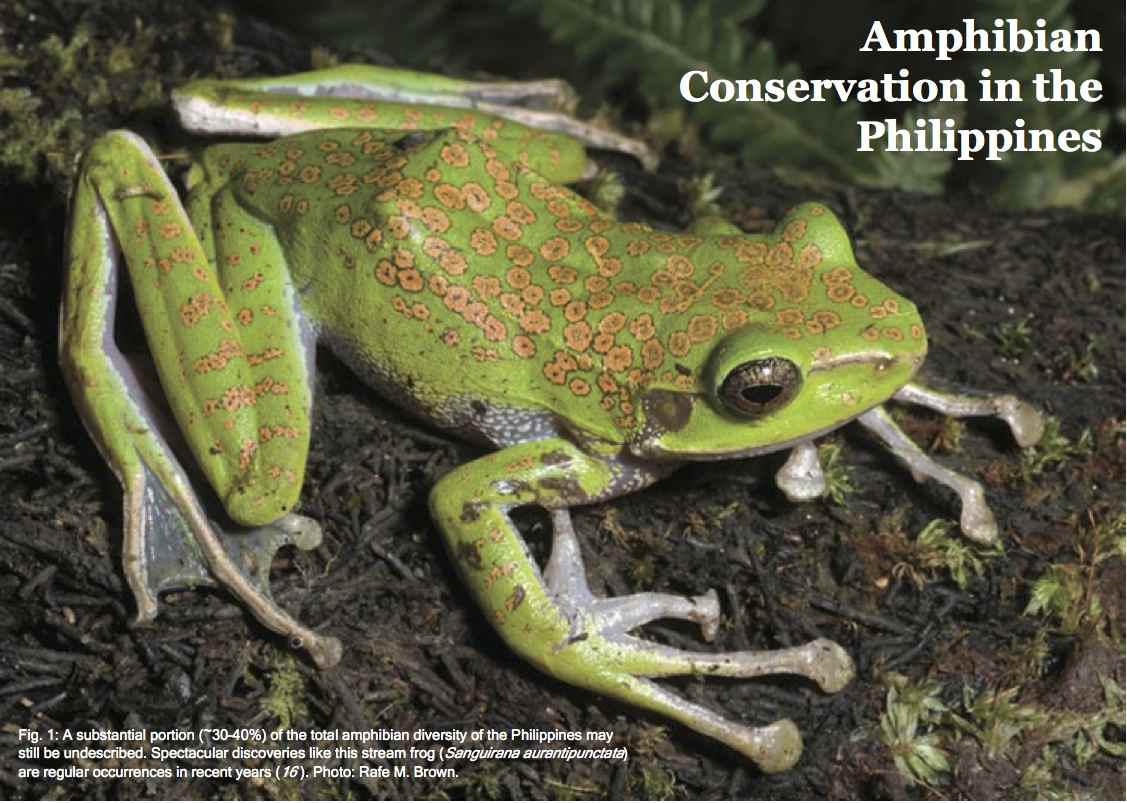Overview of Philippine Amphibian Conservation

The Philippines have an incredible level of biodiversity and a great need for conservation. The islands’ amphibians are among the top priorities for vertebrate conservation. The vast majority of Philippines amphibians occur nowhere else in the world, and many are greatly limited in their geographic ranges. There are many secretive species that are poorly known to researchers. We have a poor understanding of the amount of species diversity and distribution of Philippine amphibians, and this makes effective conservation much more difficult.
Three species of caecilians and 110 species of anurans make up the Philippines amphibian fauna. There have been five separate historical stages of species accumulation in the archipelago. The current rate of species discovery is higher than at any earlier period, and documenting species diversity and distributions has never been more urgent. This year we developed the first outline of a national strategy for documenting, studying, and hopefully mitigating the effects of the emerging chytrid fungus outbreak in amphibians. We hope to better understand the threats facing these populations.
Around 15% of Philippine species cannot have a conservation status accurately assigned to them because they cannot easily be studied or otherwise have not been studied. Around 45% of Philippine species are classified at some elevated level of conservation threat, but many species’ conservation statuses may need revision given newly available information. Recent field studies have given the reassuring news that several previously considered Critically Endangered species (the Negros cave frog Platymantis speleaus and the Polillo forest frog, P. polillensis) are actually present in greater numbers and in more areas than we realized. The “severely fragmented” nature of many species’ distributions is no longer considered as dire as it once was. Still, species with limited geographic ranges face threats from recent land-use changes and scenarios of climate change.
Several islands or mountain ranges that were subjects of early survey efforts are now recognized as having supported the most diverse amphibian communities in the country, but many have not been revisited since the initial survey. Now the largest lowland forests have been removed and the onset of climate change may have begun. “Before-and-after” surveys will determine the effects that human land use and climate change may have on long-term survival of viable amphibian populations.
–Tucker Walton
R.M. Brown, A.C. Diesmos, M.B. Sanguila, C.D. Siler, M.L.D. Diesmos, and A.C. Alcala. 2012. Amphibian conservation in the Philippines. FrogLog 20(5): 40–43. pdf
